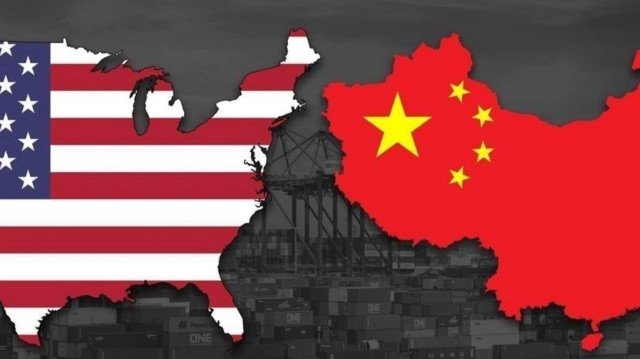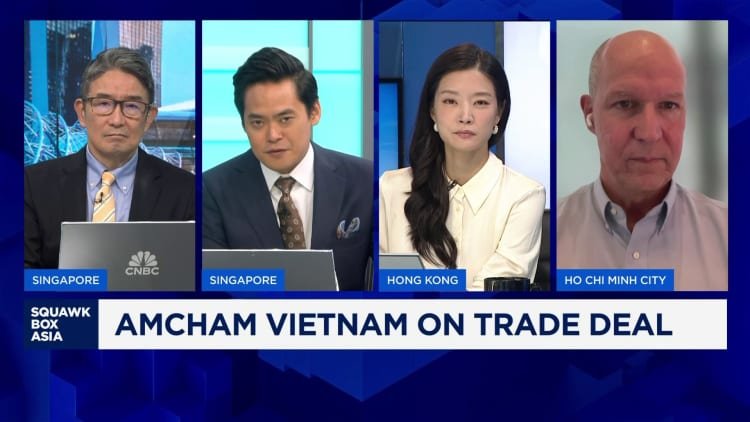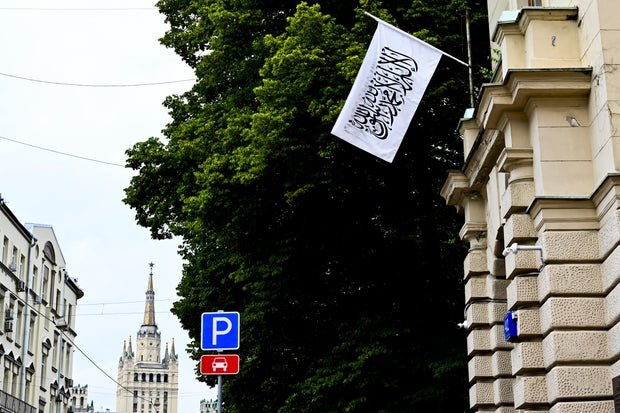
Mimi Zhu Xiyuan (right) and her Future Close-Up (FCU) partner Marcelina Liszewska present their proposal on the development of the Guangdong-Hong Kong-Macao Greater Bay Area at the closing ceremony of the 2025 FCU in Shenzhen, Guangdong Province, on June 29 (COURTESY PHOTO)
The last time I visited Shenzhen in Guangdong Province was 20 years ago. I was a young girl, and my memories are filled with specific sounds and textures: concrete slabs, the drilling of construction work, sparse empty roads and quiet streets. It felt nothing like our hometown of Shanghai, which was usually full of the chaos of a metropolitan hustle and bustle. I remember flying a brightly colored butterfly kite with my mother in the middle of an empty concrete lot. There was nothing much surrounding us, just a lot of empty space waiting to be filled. The possibilities seemed endless.
Never could I have imagined then how Shenzhen would be transformed into the megacity it is today, especially since I had seen it in its early stages of development. Shenzhen used to be a small fishing village. However, as China embarked on its reform and opening-up era in 1978, Shenzhen, thanks to its geographic advantage of neighboring Hong Kong, in 1980 became a special economic zone, a designated area with economic policies and regulations designed to attract business from overseas, and is now home to over 17 million people who have moved there from all over China—and the world at large.
Today, the city has become extremely popular online, both on Chinese and international social media, and is globally famous for its cutting-edge technology, iconic skyline, modern structures and rapid development. For me, seeing the online videos was simply not enough. I wanted to see Shenzhen for myself and understand how all this was made possible. I was hoping for a reason to return, so when I got the opportunity to explore the Guangdong-Hong Kong-Macao Greater Bay Area (GBA), including visits to Shenzhen, Hong Kong Special Administrative Region, Dongguan, and more, with the Future Close-Up (FCU) program on June 23-30, I knew this was an offer I could not refuse.
(The FCU was collaboratively launched in 2023 by China International Communications Group (CICG) Center for the Americas (CICG Center for Americas) and Tencent’s Marketing and Public Relations Department—Tencent being a leading Chinese tech and entertainment company—Ed.)
The FCU was a chance for me not just to visit the GBA, but to understand the region and study it in-depth. Not only would I be able to experience the ways this city cluster had changed, I would also be able to take a closer look at how this incredible feat was accomplished.
Looking to the future
Arriving at Shenzhen’s Baoan International Airport already felt like a teleportation into the future. Its scale was magnificent and there were driverless delivery trucks and automatic cleaning machines everywhere. When I finally arrived at the hotel and met a few of the FCU fellows, my excitement grew. The same look of anticipation glimmered in our eyes; we were buzzing with eagerness, but also had no idea what to expect.
Each day was organized with extreme precision by the program’s organizers. We visited the headquarters of many impressive local companies such as Tencent and Mindray Medical in Shenzhen, and WeRide and China Southern Airlines in Guangdong’s capital city of Guangzhou. We went to the Hong Kong University of Science and Technology, climbed atop a helipad where we saw a staggering view of the Hong Kong-Zhuhai-Macao region, and explored the intangible cultural heritage of the rural villages in Dongguan in Guangdong. We listened to the stories of innovators, professors, villagers, leaders and one another, and each day we made deeper connections in our shared amazement.
Standing on the helipad, stunned by the astonishing skyline, it occurred to me how lucky we were to see the result of decades of hard work. While it was incredible to see the result of such dedication, it was even more rewarding to actually hear from the people who researched, innovated and built toward this new reality. The FCU provided exactly as its name promised. We got a very intimate look into the future; not just the end result, but some of the many thoughtful steps it took to get there.
We learned how the technology in the GBA actively betters the lives of everyday people on a daily basis. There are robots that can help people perform difficult and strenuous physical tasks, devices that allow easier surgery and medical procedures, vehicles that enhance safety and efficiency, AI technology that brings ideas to life and serves as a tool for creation. We learned that the technology used in China is not overpowering, but a helpful assistant that we can use toward the massive task of building a shared prosperous future.
Honoring the past
While every big company was impressive in their scale and origin stories, the place that moved me the most was the countryside in Dongguan. We were greeted in the first village by a beautiful lake, happy villagers and humming cicadas. Our guides gave us bowls of freshly picked lychees from the village, and I was able to see farmers shaking the branches of a lychee tree, harvesting another fresh batch of lychees that were ready to eat.
We visited a village ancestral hall that had been newly refurbished in the past few years. Roughly 18 million yuan ($2.5 million) had been invested to revitalize the structure, and within the hall we saw the names of every village member written in beautiful gold calligraphy. The ancestral hall showed me a core principle, and a very touching one at that, in China’s development: While living conditions of the villagers improved, they also were able to preserve and celebrate the history that they will never forget.
We learned about Tencent’s Tech for Good Initiative, which aims to never leave rural populations in the margins of society. In fact, the initiative preserves cultural relics, uplift digital literacy for rural children, and allow local farmers to sell their fresh produce to customers all across the country.
Similarly, the stories and experiences of the rural parts of China should not be left in the margins either. When understanding China and its culture and history, the countryside tells a huge and vital part of the story. The widely successful development of China is not limited to its urban regions; rural areas have drastically improved and are not isolated from the rest of the country. In fact, thanks to technology, they are now more connected and integrated than ever—without losing their unique and intangible culture.
What stays after I leave
Surprisingly, even in our free time, we never ran out of things to talk about. We exchanged our thoughts about Chinese culture and development. I learned about my FCU fellows’ home countries, ranging from Brazil to Saudi Arabia to Mongolia. They told me about their initial perspectives on China and how some of them had profoundly shifted during this trip. We were all inspired by the ways that the lives of people in China have improved drastically and I was reminded of the importance of programs like these; the most invaluable experience we could ever have is cross-cultural exchange. That is how we really understand each other.
The FCU experience proved life-altering. The program exceeded my expectations and gave me an invaluable insight into the way positive change is made. It allowed me to connect with passionate, like-minded individuals and feel the ways we are connected through curiosity and energy. Every single person I met on the trip was dedicated to a promising future and, each in our own way, to uplifting the communities and causes we deeply care about.
On the last evening of our trip, I climbed Lianhua Mountain in Shenzhen with some of my new lifelong friends, just so I could see a sprawling and sparkling view of the city. On my way up the trail, we saw kites flying in the sky.
They reminded me of the kites I had flown with my mother as a child, in a concrete lot that may now be the site of incredulous infrastructure.
(Print Edition Title: Concrete and Culture: A Harmonious Evolution)
The author is an anchor and writer with Wave Media in Shanghai
Copyedited by Elsbeth van Paridon
Comments to taoxing@cicgamericas.com







